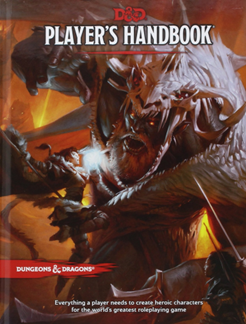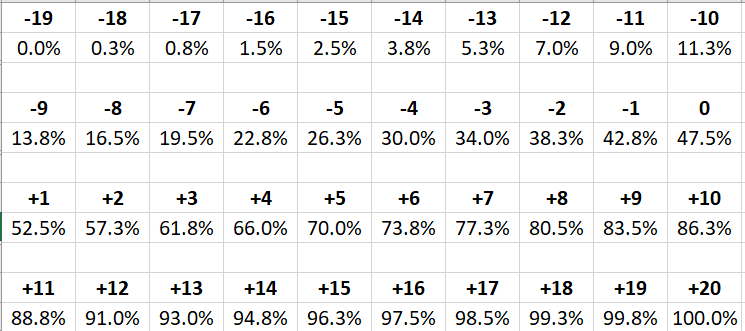 In Dungeons & Dragons, there are many times you don’t want the monsters to see you. The rules for hiding are written deliberately to leave a lot of power in the hands of the Dungeon Master. Basically, if the DM thinks the situation warrants that you can hide, you can make the check. Otherwise you can’t.
In Dungeons & Dragons, there are many times you don’t want the monsters to see you. The rules for hiding are written deliberately to leave a lot of power in the hands of the Dungeon Master. Basically, if the DM thinks the situation warrants that you can hide, you can make the check. Otherwise you can’t.
This is one of the areas where Passive Perception comes into its own. As noted by many people, Passive Perception causes problems for Dungeon Masters using traps, but it’s a brilliant mechanic to provide the difficulty of hiding. By default, if you roll higher than the Passive Perception score of a creature on your Dexterity (Stealth) check, you can hide from it. Otherwise, you don’t.
One of the reasons this is a great mechanic is it makes the difficulty of hiding easy to assess. If both of you have equal bonuses to your respective ability checks, then you have a 50% chance of hiding. Each one differential in bonuses causes the chance to change by 5%. If you have a +10 to hide and your opponent has a +0 to perception (thus a 10 Passive Perception), you have an 100% chance of success.
Things get a bit harder to easily predict when you use contested rolls; that is, when both sides roll a d20 and add their bonuses. This occurs when a creature actively searches for you. Typically, you don’t make your Dexterity (Stealth) check again, instead using your previous roll, but it’s still a set of opposed dice. Here’s the table to demonstrate what happens then, depending on differential on ability bonuses (Perception less Stealth):

One of the most interesting things to note about the table is that the range of values is much greater: from -20 to +20 as a differential, compared to -10 to +10 when rolling against a passive score. The other thing to note is that the difference between the chances isn’t a flat 5% each time: it varies. From 0 to +1 it is a 5% chance, but everywhere else the chance of success changes at a different rate.
By the table, if you have a -19 to your Wisdom (Perception) check and your opponent has a +0 to his Dexterity (Stealth) check, then you’ll always fail to find them. To find a hidden creature with an active check, you must exceed what your opponent rolled. Even if you roll a natural 20 on your check, you get a total of 1, which is the minimum your opponent can roll: you can never succeed.
Here’s the table again, with the third row showing the Passive score percentages:

As you can see, if the differential is between -5 and +5, the percentages aren’t that different from each other; it’s at the extremes that they vary more.
However, how often will those extremes come up? For player characters, a bad bonus is -1, a really good one (a 20th level character with a 20 Ability Score and Expertise in the skill) will be a +17. Will the situation come up? It might, but it won’t be that common. (It’s a little more common at the highest levels of play).
The real brilliance of using Passive Perception is that it reduces the amount of dice-rolling needed. Imagine a group of enemies attempts to hide from a party of characters. If you make individual rolls for the enemies, you also need to make individual rolls for each PC against each enemy. A situation of 5 enemies and 5 PCs turns into twenty-five rolls from the PCs. Yes, we tend to use Passive Perception to make those situations easier.
It’s worth noting again that it is the Dungeon Master that determines when you can hide and when you stop hiding. There are very few hard and fast rules about this situation, because there are so many unusual situations. Typically, you can’t cross an open courtyard and surprise the guards there, because they’d easily see you. However, if an ally has created the illusion of a demon (or summoned a real demon!) on the opposite site, the distraction may be enough for the Dungeon Master to rule that you can sneak up on them unseen. This still requires a successful Dexterity (Stealth) check, however – and a sympathetic DM.
You stop hiding when you attack: hit or miss. You stop hiding when a creature can see you clearly, or if you make noise (casting a spell typically falls under this).
The Passive Perception score gets modified up by +5 when a creature would have advantage to detect you – such as that given by Keen Hearing. It is modified by -5 when a creature has disadvantage to detect you, such as when you’re wearing a cloak of elvenkind.
Remember that a creature is only surprised in combat if it can’t detect any of the enemy: if it detects just one, it isn’t surprised. I typically require stealthy characters to travel far in advance of other characters (60 or 90 feet is typical) if they don’t want the platemail-clad fighters to give away their position. This allows the rogues and rangers to make surprise attacks, but it also means they’re far away from help if it is needed.
I find Passive Perception to be very useful when dealing with steathy characters and creatures. I record the Passive Perceptions of the characters when each session begins, so I can easily refer to it as needed. However, when used to detect traps, things become a bit trickier. I’ll discuss the interaction between traps and Passive Perception in a future article.

Yes, I think WOTC kind of painted themselves into a corner with traps with set DCs then they added passive perception with set DCs….and then you’re getting fixed DC vs fixed DC, when not a single other part of the game does that.
I think Passive Perception is best served as a Catalyst to Active Checks.
For example, you’re wandering dungeons and you (Passive Perception) Notice a few stones in the floor look a little odd…
Now you do an active check, likely Investigation, and see if you can see why they are odd. You may, in a sense, think ‘they’re trap triggers’ no matter the result of your checks, but wouldn’t actually know without a successful active check.
Likewise, when it comes to detecting something / someone stealthing around. Your passive perception notices a rustle of the brush, hears the scuffles of footsteps. An active check reveals the nature of the creature.
Obviously it doesn’t work in every situation, but I think it’s a good one to resolve the issues of passive vs. static DCs.